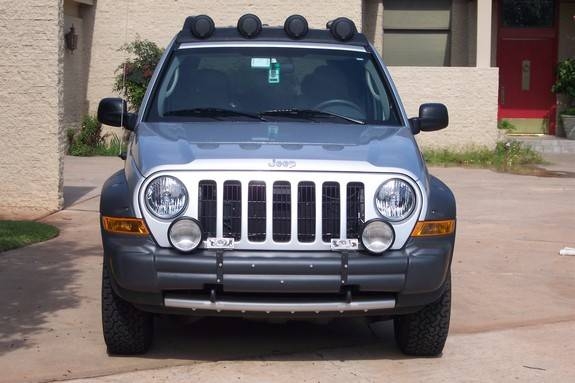
First the good news. If you drive an SUV, pickup truck or any other type vehicle on which fog lights are preinstalled or you've added them on yourself, there is no federal law prohibiting their placement on the vehicle. Second, there isn't any bad news. It's more no news at all, really. That's because there is no record in the United States, except California, where motor vehicle laws specifically address the use of front fog lights. And even in California it was debatable because of conflicting interpretations of laws, until they were clarified in 1996.
Rick Russell owned a 1956 Jeep Wrangler on which he had installed fog lights on the front bumper. Driving in South Tahoe in 1995, a California Highway Patrol officer cited him for not having covers on his off-road lights. He had a hearing before the local magistrate and testified that the fog lights were not "off-road" lights but were, in fact, "auxiliary" or fog lights as permitted by California Motor Vehicle Code #24402 and therefore didn't require covers. The code states: "Any motor vehicle may be equipped with not to exceed two auxiliary driving lamps mounted on the front at a height of not less than 16 inches nor more than 42 inches." Despite the lights falling within those parameters, Russell was found guilty. The officer argued that the lights were off-road lights covered by section #24411, which allows up to eight lights, but they must be covered when not in off-road use.
Being a persistent fellow and, in this case, within the bounds of the law, Russell appealed to the California Superior Court, which overturned the lower court ruling. Simply put, the three-judge panel concluded that the fog lights were auxiliary lights and didn't require covers.
Covering all his bases, Russell wrote to the federal Department of Transportation, National Highway Safety Administration, to make certain he wouldn't be cited under federal law. The administration's response was that the DOT had no jurisdiction in such matters.
"DOT regulation on motor vehicle lighting (Federal Motor Vehicle Safety Standard No. 108 Lamps, Reflective Devices, and Associated Equipment) does not prescribe requirements for lamps intended to supplement the headlamps, and thus the lamps...do not have to be certified as meeting Standard No. 108," --Samuel J. Dubbin, DOT Chief Counsel, Dec. 22, 1995.
There really isn't much of a moral to the story, except that it is wise to familiarize yourself with the laws in your state and municipality. For example, some states allow radar detectors and some states will cite drivers found using them.
While it would be silly to regulate the placement of fog lights from one municipality to another, there is a parallel case in the state of Pennsylvania, where one small town wanted to ban the use of cell phones while driving. While such prohibitions have been enacted in various forms on a state-by-state basis, what are the odds of a motorist passing through little old East Rockhill Township knowing that he couldn't use a cell phone in that community. It's hard enough to tell when you're even in East Rockhill Township. Needless to say, the citation was appealed and the magistrate tossed out the ticket.

For those traveling outside of the United States, however, it is best to inquire about the laws in the country in which you are visiting because of differing regulations about fog lights. Canada, Great Britain, Tasmania and Australia, to name a few, have laws pertaining to fog lights. Since 2008 in Australia, for example, you can be fined $119 for using fog lights in anything other than hazardous weather conditions.